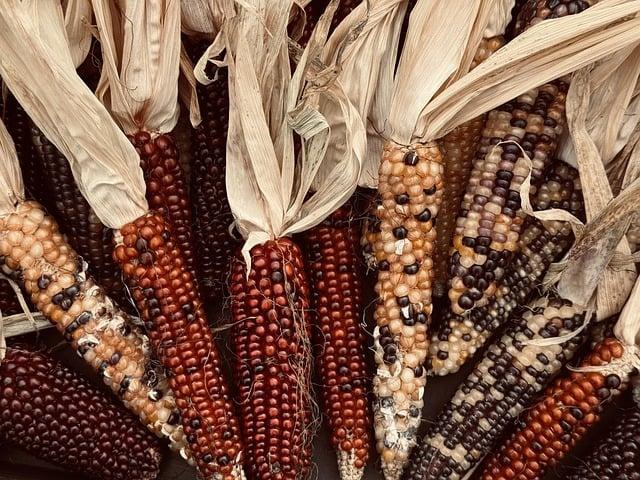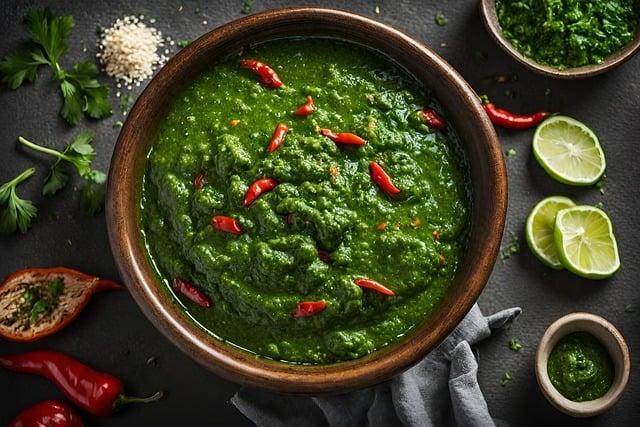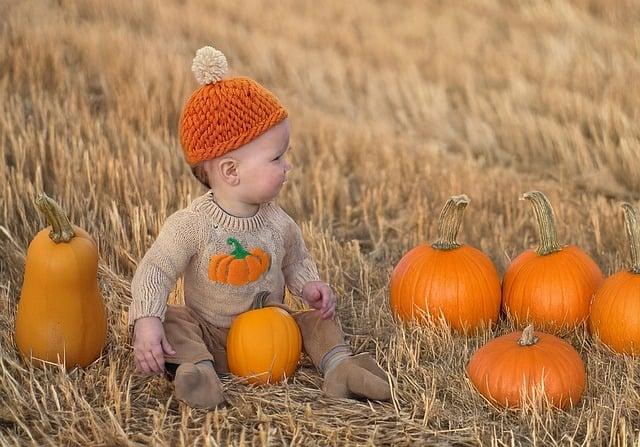As the sun dipped low on the horizon, casting a warm glow over the harvest fields, a family gathered around a table adorned with symbols of gratitude. The golden turkey, perfectly roasted, stood as the centerpiece, its savory aroma filling the air. Surrounding it were vibrant dishes of cranberry sauce, green bean casserole, and pumpkin pie, each representing the bounty of the season. A cornucopia overflowed with fruits and nuts, a reminder of nature’s generosity. Together, they shared stories of thanks, each emblem weaving a tapestry of love and tradition that would echo through generations.
Table of Contents
- The Rich Tapestry of Thanksgiving Symbols
- Exploring the Culinary Icons of the Feast
- Natures Bounty: The Significance of Harvest Decor
- Traditions and Rituals: Emblems that Unite Families
- Q&A

The Rich Tapestry of Thanksgiving Symbols
Thanksgiving is a celebration rich with symbols that evoke feelings of gratitude, togetherness, and the bounties of the harvest. At the heart of this festive occasion is the **turkey**, often regarded as the centerpiece of the Thanksgiving feast. This large bird not only represents abundance but also serves as a reminder of the historical feast shared between the Pilgrims and Native Americans. Accompanying the turkey are **pumpkins**, which symbolize the harvest season and are often transformed into delicious pies, adding a sweet touch to the holiday table. Other staples like **cranberries** and **corn** further enrich the meal, each carrying its own significance tied to the agricultural roots of the celebration.
Beyond the dinner table, various symbols embody the spirit of Thanksgiving. The **cornucopia**, or horn of plenty, is a traditional emblem of abundance and nourishment, often filled with fruits, vegetables, and grains. It serves as a visual reminder of the blessings of the harvest and the importance of sharing with others. Additionally, **fall leaves** and **autumn colors** reflect the beauty of the season, creating a warm and inviting atmosphere for gatherings. Together, these symbols weave a rich tapestry that captures the essence of Thanksgiving, inviting us to reflect on our blessings and the connections we share with family and friends.

Exploring the Culinary Icons of the Feast
As the aroma of roasted turkey fills the air, it becomes clear that this bird is more than just a meal; it is a symbol of gratitude and togetherness. The golden-brown skin, perfectly seasoned, represents the heart of the Thanksgiving feast. Accompanying the turkey are traditional sides that have become culinary staples over the years. These dishes not only tantalize the taste buds but also evoke cherished memories of family gatherings and shared laughter. Among these beloved accompaniments are:
- Stuffing: A savory blend of bread, herbs, and spices, often cooked inside the turkey or served alongside it.
- Cranberry Sauce: A vibrant, tangy complement that adds a burst of flavor and color to the plate.
- Mashed Potatoes: Creamy and buttery, these fluffy clouds are a comforting staple that pairs beautifully with gravy.
- Green Bean Casserole: A delightful mix of green beans, cream of mushroom soup, and crispy onions, embodying the essence of home-cooked goodness.
As the feast unfolds, the dessert table emerges as a sweet finale, showcasing the iconic pumpkin pie. Its spiced filling, nestled in a flaky crust, is a testament to the season’s harvest and the warmth of family traditions. Other desserts, such as pecan pie and apple crisp, add variety and richness to the celebration. Each bite of these treats not only satisfies the palate but also serves as a reminder of the abundance and blessings that the holiday represents. Together, these culinary icons create a tapestry of flavors that celebrate the spirit of Thanksgiving.

Natures Bounty: The Significance of Harvest Decor
As the season of gratitude approaches, the beauty of harvest decor becomes a central theme in our celebrations. The vibrant colors of autumn leaves, the rich hues of pumpkins, and the golden glow of cornucopias serve as reminders of nature’s bounty. These elements not only enhance our surroundings but also symbolize the abundance of the harvest and the importance of giving thanks for the food that nourishes us. Incorporating these natural elements into our decor creates a warm and inviting atmosphere, encouraging gatherings that celebrate both family and community.
Among the most cherished symbols of this season are:
- Pumpkins: Often carved or displayed, they represent the harvest and the transition into winter.
- Cornucopias: Known as the “horn of plenty,” they symbolize abundance and nourishment.
- Autumn Leaves: Their vibrant colors remind us of the beauty of change and the cycle of life.
- Gourds: These unique shapes and colors add texture and variety to our decor.
- Wheat Bundles: Representing the grain harvest, they signify sustenance and prosperity.
By embracing these emblems, we not only beautify our homes but also honor the traditions and values that Thanksgiving embodies. Each piece of decor tells a story, connecting us to the earth and to one another as we gather to reflect on our blessings.

Traditions and Rituals: Emblems that Unite Families
Thanksgiving is a tapestry woven with traditions and rituals that serve as emblems of unity for families across the nation. Each gathering is marked by the familiar aroma of roasted turkey, a centerpiece that symbolizes gratitude and abundance. As families come together around the dinner table, they share not only a meal but also stories that echo through generations. The act of breaking bread becomes a sacred ritual, where laughter and memories intertwine, reinforcing bonds that may have frayed over time. The table, adorned with seasonal decorations, becomes a canvas of love, showcasing the effort and care that each family member contributes to the feast.
In addition to the culinary delights, various customs enrich the Thanksgiving experience, creating a sense of belonging and continuity. **Gratitude circles**, where each person expresses what they are thankful for, foster an atmosphere of reflection and appreciation. **Family games**, whether it’s a friendly football match or board games, inject joy and camaraderie into the day. The **sharing of recipes**, passed down through the years, not only preserves family heritage but also invites younger generations to participate in the culinary legacy. These emblems of Thanksgiving, from the food to the rituals, serve as a reminder of the importance of togetherness, creating lasting memories that families cherish long after the last slice of pie is gone.
Q&A
-
What are the traditional foods associated with Thanksgiving?
Thanksgiving is often celebrated with a feast that includes:
- Turkey: The centerpiece of most Thanksgiving dinners.
- Stuffing: A savory mixture often made with bread, herbs, and spices.
- Cranberry Sauce: A sweet-tart condiment that complements the turkey.
- Pumpkin Pie: A classic dessert that symbolizes the season.
-
What symbols represent Thanksgiving?
Several symbols are commonly associated with Thanksgiving, including:
- Cornucopia: A horn-shaped basket filled with fruits and vegetables, symbolizing abundance.
- Pilgrims: Early settlers who are often depicted in traditional attire during Thanksgiving celebrations.
- Native Americans: Representing the original inhabitants of the land and their role in the first Thanksgiving.
-
Why is Thanksgiving celebrated?
Thanksgiving is celebrated to:
- Give thanks: A time to express gratitude for the harvest and blessings of the past year.
- Gather with family: An opportunity for families and friends to come together and strengthen bonds.
- Reflect on history: A moment to acknowledge the historical significance of the holiday.
-
What activities are popular during Thanksgiving?
Common activities during Thanksgiving include:
- Feasting: Enjoying a large meal with loved ones.
- Watching parades: Many enjoy watching Thanksgiving Day parades on television.
- Football: A popular tradition for many families to watch or play football games.
- Volunteering: Many people give back by serving meals to those in need.
As we gather around the table this Thanksgiving, let us cherish the emblems that unite us—turkey, pumpkins, and gratitude. These symbols remind us of our shared history and the warmth of togetherness, making each celebration a heartfelt tradition.

大家好,我是彼得潘,專業的手法身體治療師。我喜歡探索和研究各種主題,並透過與人工智慧的合作分享專業、實用、有趣的文章。我們定期進行人工審核,以確保內容的準確性。如果您發現文章中有任何不準確的地方,請隨時與我們聯繫,我們會及時糾正。您可以透過 [email protected] 與我們聯繫。



